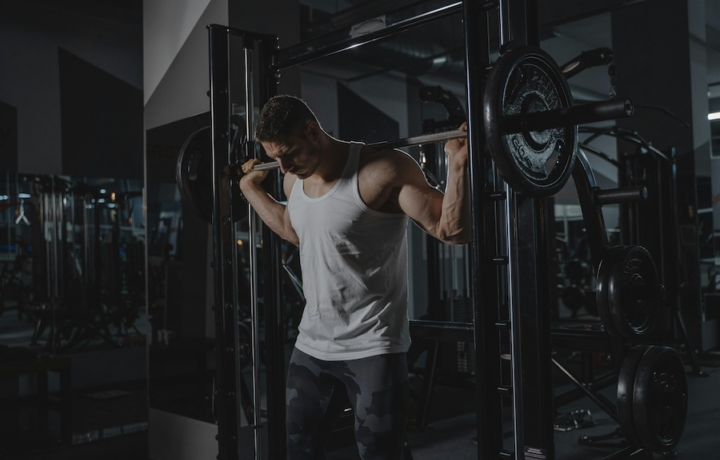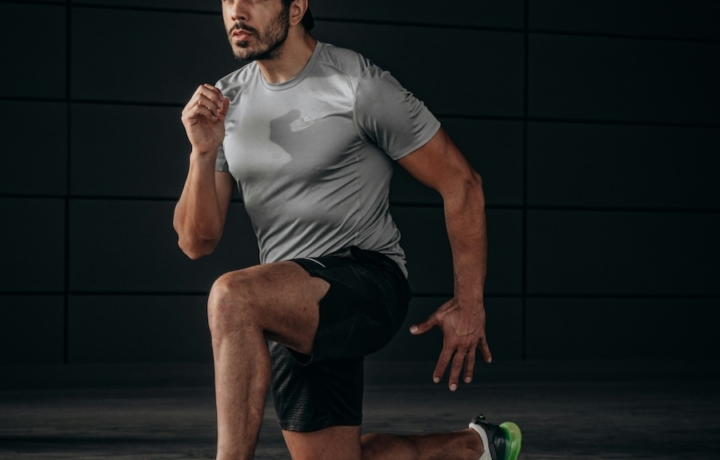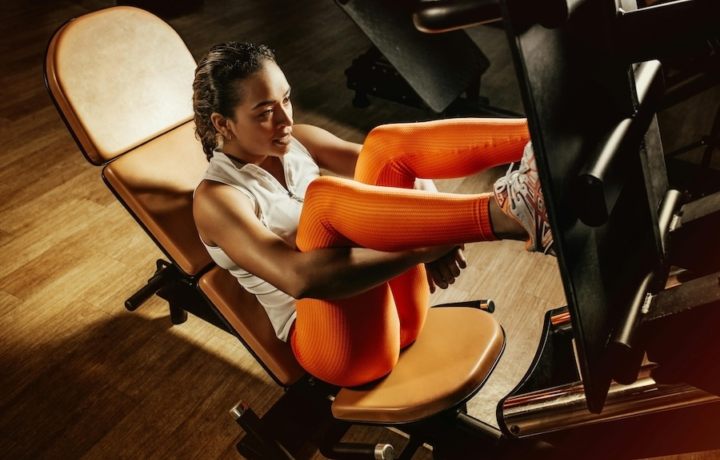Exercise
Side Lunge

Side Lunge
How to Perform
- Stand with your feet hip-width apart, toes pointing forward, and arms at your sides, maintaining a neutral spine.
- Shift your weight to your left foot and take a wide step to the right, keeping your toes pointing forward or slightly outward.
- Bend your right knee and push your hips back as you lower into the lunge, keeping your left leg straight but not locked.
- Lower until your right thigh is parallel to the floor, ensuring your right knee tracks over your toes but doesn't extend past them. Exhale as you descend.
- Keep your chest lifted, shoulders pulled back, and core engaged throughout the movement to maintain proper alignment.
- Place your hands on your hips for balance or extend them in front of you if additional stability is needed.
- Push through your right heel and inhale as you return to the starting position, engaging your glutes and inner thighs.
- Repeat on the opposite side by stepping out with your left foot, maintaining equal distribution of reps on both sides.
Important information
- Keep your weight in the heel of your lunging foot to activate your glutes properly and reduce knee strain.
- Maintain a neutral spine throughout the exercise, avoiding forward leaning or rounding of the back.
- If you experience knee discomfort, reduce the depth of your lunge or widen your stance until you build more strength and mobility.
- For progression, hold dumbbells at your sides or a single weight at chest height to increase resistance.

Side Lunge
Exercise Details
Primary Muscles
Muscle Groups
Mechanic
Risk Areas
Built for progress
Take the guesswork out of training
Create personalized AI-powered workout plans that evolve with you. Train smarter, track every rep and keep moving forward, one workout at a time.






The Side Lunge is an intermediate movement that targets multiple lower body muscle groups simultaneously while enhancing lateral mobility—something often neglected in traditional forward-and-back training. This dynamic exercise primarily engages your glutes, quads, and adductors, making it an excellent addition to various training styles including HIIT circuits, bodybuilding routines, and pre-workout warm-ups.
What makes the Side Lunge particularly valuable is its ability to train the body in the frontal plane, challenging your muscles and joints to stabilize in directions they don't typically work in during everyday activities. The movement pattern strengthens the often-underworked adductor muscles along the inner thigh, which play a crucial role in preventing knee injuries and maintaining hip stability during other exercises and daily movements.
For athletes and fitness enthusiasts focused on comprehensive lower body development, the Side Lunge fills important gaps in traditional training programs. It builds unilateral strength, meaning each leg works independently, which helps identify and correct muscle imbalances between your dominant and non-dominant sides. This translates to improved performance in sports requiring lateral agility such as tennis, basketball, and soccer.
The Side Lunge also serves as an excellent mobility enhancer, opening up the hips and improving range of motion in the adductors—areas that commonly become tight from prolonged sitting. Regular incorporation of this exercise can help counteract the effects of our modern sedentary lifestyle while building functional strength that transfers to real-world movements.
Whether you're using it as part of a high-intensity interval session, as an accessory movement in your strength training, or as a dynamic mobility drill, the Side Lunge delivers significant benefits with minimal equipment requirements. Its versatility makes it appropriate for nearly any fitness level, though beginners should master proper form before adding weights or increasing repetition speed.
FAQ - Side Lunge
The Side Lunge primarily targets the quadriceps, glutes, and adductors (inner thigh muscles). It also engages your hamstrings, calves, and core muscles as stabilizers during the movement.
Beginners can perform shorter lunges without weights and hold onto a stable surface for balance. To increase difficulty, add dumbbells, increase range of motion, or try the exercise on an unstable surface like a BOSU ball.
The most common mistakes include allowing the knee to collapse inward past the toes, rounding the lower back, and not pushing through the heel when returning to standing. Focus on keeping your chest up, knee tracking over your foot, and maintaining a neutral spine throughout.
Incorporate Side Lunges 2-3 times per week with at least 48 hours between sessions targeting the same muscle groups. They work well as part of lower body strength days or as a dynamic movement in full-body circuit training.
Side Lunges can be safe for many with minor knee issues when performed with proper form, but individuals with significant knee pain or injuries should consult a physical therapist first. Start with a smaller range of motion and focus on proper alignment before progressing to deeper lunges.











